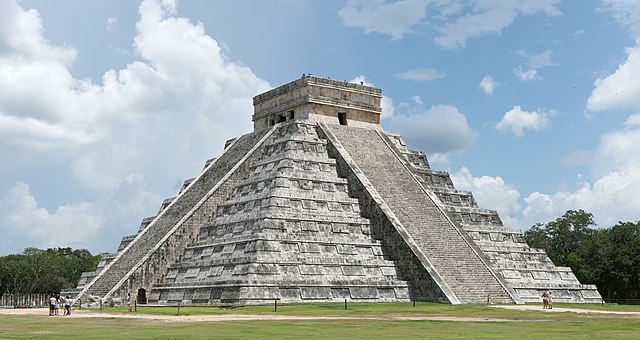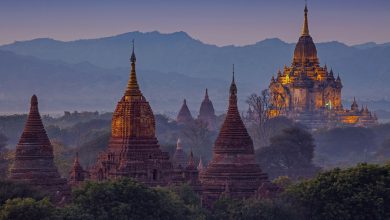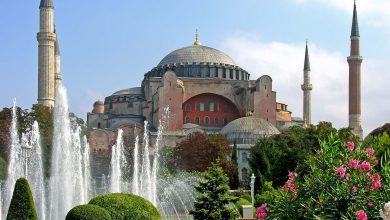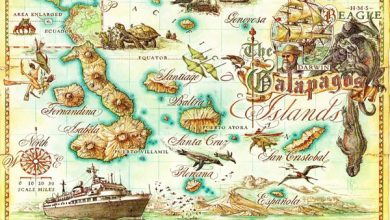Chechen Itza History.
Chichen Itza was a major pre-Columbian city built by the Maya civilization. It thrived between the 9th and 12th centuries.
Chichen Itza is one of the most famous archaeological sites in Mexico. Located in the Yucatán Peninsula, it showcases the advanced engineering and astronomical skills of the Maya. The city includes iconic structures like El Castillo, a pyramid dedicated to the deity Kukulcan.
Chichen Itza also features the Great Ball Court, Temple of the Warriors, and the Sacred Cenote. These structures reflect the city’s religious, political, and cultural significance. Thousands of tourists visit annually to marvel at its historical grandeur. Its designation as a UNESCO World Heritage Site underlines its global importance.
Origins And Early Development
Chichen Itza, one of the most iconic archaeological sites, has a rich history. This ancient city was a major focal point in the Mayan civilization. The story of Chichen Itza’s origins and early development is filled with mystery and intrigue.
Founding Myths
The founding of Chichen Itza is surrounded by many legends. One popular myth says the city was established by the god Kukulkan. Kukulkan is often depicted as a feathered serpent. Another story mentions the Itza tribe, who were guided to the site by a sacred cenote.
These myths reflect the deep spiritual and cultural significance of the city. The legends helped to shape the identity and beliefs of the Maya people.
Early Inhabitants
Archaeological evidence suggests that Chichen Itza was first inhabited around 600 AD. The early settlers were skilled farmers and traders. They developed a complex society with a strong emphasis on religion and astronomy.
The city quickly grew into a bustling metropolis. It became a center for commerce, art, and science. The early inhabitants built impressive structures, including temples and pyramids.
| Period | Significant Developments |
|---|---|
| 600-800 AD | Early settlement and development of agriculture |
| 800-1000 AD | Expansion of trade and construction of major structures |
By 1000 AD, Chichen Itza had become a powerful city-state. Its influence extended across the Yucatan Peninsula.
The early development of Chichen Itza laid the foundation for its later prominence. The city’s growth and prosperity were driven by its strategic location and rich resources.

Credit: en.wikipedia.org
Architectural Marvels
Chichen Itza, a UNESCO World Heritage site, boasts stunning architectural marvels. These ancient structures tell stories of the past. Two significant sites are El Castillo Pyramid and The Great Ball Court.
El Castillo Pyramid
El Castillo, also known as the Temple of Kukulcán, is a prominent pyramid. It stands at the center of Chichen Itza. The pyramid has 91 steps on each side, totaling 364 steps. The top platform makes the 365th step, symbolizing a year.
El Castillo’s design reflects the Maya calendar. During equinoxes, shadows form a serpent on the stairs. This effect shows the advanced knowledge of astronomy. The pyramid is a testament to Maya engineering and art.
The Great Ball Court
The Great Ball Court is the largest ancient sports field in Mesoamerica. It measures 545 feet in length and 225 feet in width. The court was used for the Mesoamerican ballgame, a ritual sport.
The walls of the court are high and vertical. They have stone rings mounted high up. Players aimed to pass a rubber ball through these rings. The game held deep religious and cultural significance.
Intricate carvings adorn the walls. These carvings depict players, gods, and rituals. The court’s acoustics are remarkable, allowing whispers to be heard clearly across its length. This shows the Maya’s architectural prowess.
Cultural Significance
The history of Chichen Itza is rich with cultural importance. It was a center for the Maya civilization. This ancient city has a lot to teach us about their way of life.
Religious Practices
Chichen Itza was a hub for religious activities. The Maya performed many rituals here. One of the most famous structures is the Temple of Kukulkan.
This temple is a step pyramid. It is also known as El Castillo. This pyramid was dedicated to the feathered serpent god, Kukulkan. The Maya held many ceremonies at this temple.
- Offerings to the gods
- Human sacrifices
- Prayers for rain and harvest
Another important site is the Cenote Sagrado. This is a natural sinkhole. The Maya believed it was a gateway to the underworld. They threw offerings into the cenote to please the gods.
Astronomical Alignments
Chichen Itza is also known for its astronomical alignments. The Maya were skilled astronomers. They built structures that aligned with the stars and planets.
One famous example is the alignment of the Temple of Kukulkan. During the equinoxes, shadows create the illusion of a serpent descending the pyramid. This shows the advanced understanding of astronomy by the Maya.
Another important structure is the Observatory, also known as El Caracol. This building was used to track celestial events. The Maya could predict solar and lunar eclipses using this observatory.
| Structure | Purpose |
|---|---|
| Temple of Kukulkan | Religious ceremonies and astronomical alignments |
| Cenote Sagrado | Offerings and sacrifices |
| Observatory (El Caracol) | Tracking celestial events |
Chichen Itza’s structures reflect its cultural and astronomical importance. They give us a glimpse into the Maya civilization.

Credit: www.britannica.com
Rediscovery And Preservation
The ancient city of Chichen Itza is a marvel of the Maya civilization. Rediscovery and preservation efforts have played a crucial role in revealing its splendor. The city’s structures, including the iconic pyramid, have captivated historians and tourists alike. This section explores the rediscovery and preservation efforts that have brought Chichen Itza back to life.
Modern Excavations
Modern excavations at Chichen Itza began in the late 19th century. Archaeologists unearthed many hidden treasures from the ruins. These efforts have provided valuable insights into Maya culture and architecture.
Excavations have revealed intricate carvings, murals, and artifacts. These discoveries have significantly contributed to our understanding of Maya history.
Key Findings:
- El Castillo: The pyramid dedicated to Kukulkan, the feathered serpent god.
- Temple of the Warriors: A large complex with intricate columns and carvings.
- Great Ball Court: The largest and most impressive ball court in Mesoamerica.
Tourism Impact
Tourism has had a profound impact on Chichen Itza. The site attracts millions of visitors each year.
Positive Impacts:
- Increased awareness and appreciation of Maya culture.
- Economic benefits for local communities.
- Funding for continued preservation efforts.
Challenges:
- Wear and tear on ancient structures.
- Environmental damage due to high foot traffic.
- Balancing tourism with preservation needs.
Efforts are ongoing to manage tourism sustainably. These efforts aim to protect Chichen Itza for future generations.

Credit: www.britannica.com
Frequently Asked Questions
What Is Chechen Itza?
Chechen Itza is a historic Mayan city in Mexico. It’s known for its impressive pyramids and ancient ruins.
When Was Chechen Itza Built?
Chechen Itza was built around 600 AD. It flourished between 900 and 1200 AD.
Why Is Chechen Itza Famous?
Chechen Itza is famous for the Pyramid of Kukulcan. It’s a UNESCO World Heritage site and a New Seven Wonders of the World.
How Can You Visit Chechen Itza?
You can visit Chechen Itza by taking a guided tour. It’s located in the Yucatan Peninsula, Mexico.
Conclusion
Chechen Itza offers a glimpse into ancient Mayan civilization. Its history is rich and fascinating. Exploring this site reveals cultural and architectural marvels. Visiting Chechen Itza provides a deeper appreciation of human ingenuity. Dive into its past to unlock its many mysteries.
This historical treasure remains a must-visit destination for history enthusiasts.



